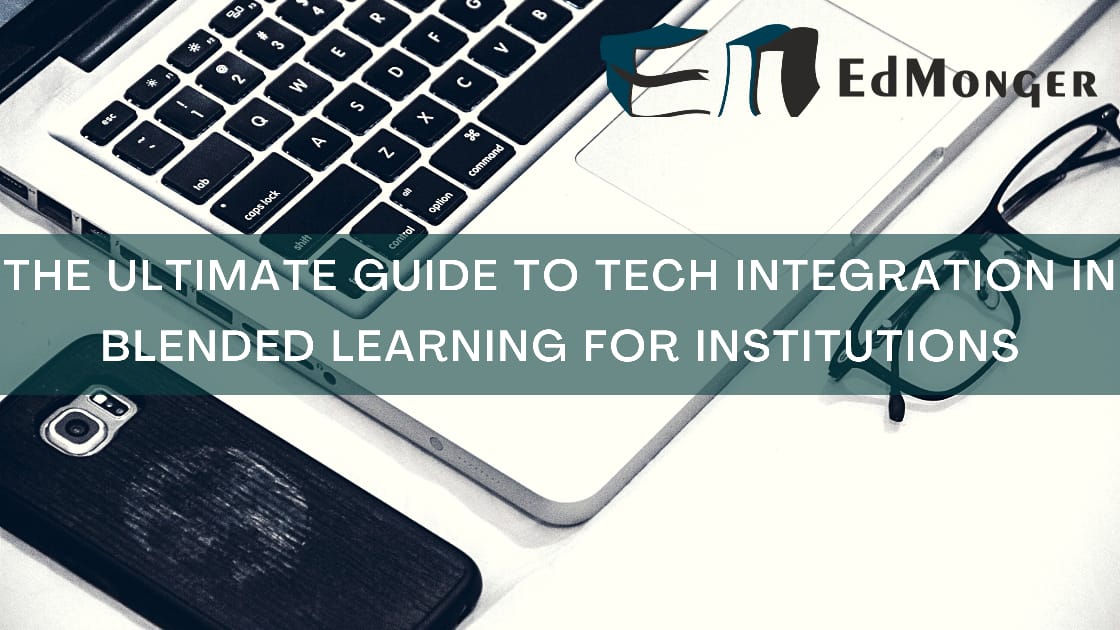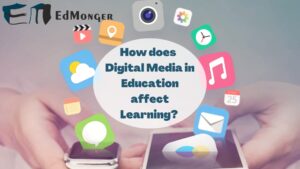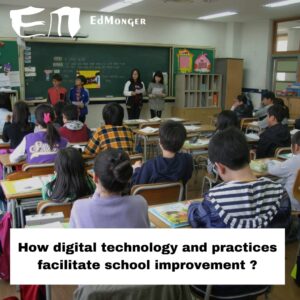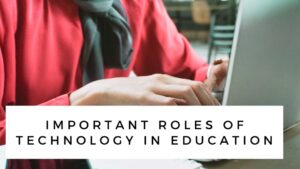After COVID-19 a new wave in the education sector of India has come, people are accepting online learning wholeheartedly, therefore, utilising the perks of online learning without missing the human factor required to learn through offline classes. The report presented by Pwc tells that there’s a boom in hybrid and blended learning approaches.

But before any institution plans for a blended approach, there are several things which need strongly planned. Technology being the most imperative part of blended learning the organisation will have to meticulously look for the software and hardware available which must deliver a good learning experience. Following is the extensive guide to technology integration in blended learning.
Technology in Blended Learning mode
The blended model simply means effective utilisation of educational technologies with offline real-time access to learning. There are various ways to create a blended model in an organisation/program but before those certain checks are required to be done. Such as:
Hardware How are the students going to access the online mode? Does the organisation have enough hardware like computers or tablets or if it is through mobile and flip versions of classes will be in practice?
Network If the institution is setting up a model for how students will access the network: wi-fi or wired and how much bandwidth will be required since there will be multi-users at the same time so slow speed might spoil the learning experience
Software There are tons of applications which are available to execute the hybrid mode of teaching-learning required from delivering a class to discussion portals to real-time conversations to collaborative tools, cloud storage to access the study material and sharing the assignments, managing the data of students, etc.
The following part of this article has broadly classified and covered various educational technology for blended learning and some of the best applications for the same.
Choosing Learning Management Systems for Blended model
An LMS (Learning Management System) is the backbone of any blended learning model as it gives them the freedom to organise, arrange and sort the data of the students which would be the most cumbersome process without the use of dedicated software.
Imagine you have 5000 students in a blended setting and in an offline traditional model it is still manageable to record their learning and their relevant data but when online it’s almost next to impossible to communicate, pass information or collect their data. Therefore, the Learning Management system provides the convenience of managing data for both, online as well as offline learning.
There’s a huge list of offerings from companies when choosing an LMS. You can create a list of things which you’re looking for and provide it to various LMS providers and go with the best price and services.
One thing which should be your top priority is the speed and how would you store students’ data: cloud storage or in-built storage? As we’re in a century where we need everything downloaded in partial seconds a high-speed experience is a very crucial part of a good learning experience and an edge over for smooth management.
There are two ways an organisation can avail learning management system
- Privately owned LMS – It can be customised according to individual needs
Some Worldwide service providers
- Blackboard
- Desire 2 Learn
Open Sources
- Moodle (Open Source)
- Canvas LMS (open source
Top Indian LMS service providers
- E-khool
- Mint book LMS
- My Class Campus
- Paradiso LMS
Web Based Classroom Management System- It provides free tools with multi-functionality which work on a subscription basis
Google Classroom
Blended learning needs an efficient LMS as e-learning or hybrid mode of learning can only be possible if advanced tools are used for supporting it.
As the Blended learning approach provides the freedom not to carry books and hustle about where to find the resource or how to attend a lecture happeningat a far distance. Therefore, blended learning tools like LMS should provide a complete end-to-end solution for online learning.
Points to consider before purchasing LMS for setting up a blended learning platform for the students and employees
● Access to video lectures and other e-content.
● Tools to provide a platform for collaborative activities.
● It should include discussion boards and chat.
● Convenient option for Uploading/downloading assessment and assignments
● It must provide a self-paced learning approach.
● Personal accounts or a common classroom
● Auto updates and reflection of the inventory and data are highly suggested.
The beauty of this tool is that it must give freedom to home-based learning and on-campus learning.
Online Conferencing Technology and Tools to leverage Blended Learning
The first step to starting a blended learning program is to use a technology which will enable students to access real-time learning in an online mode along with an offline mode. Web conferencing technology is the best solution for it. For all the synchronous activities online, conferencing tools are the one-stop solution where a teacher/trainer can either webcast or give a class for real-time learners.
There are many applications free as well as paid which provide the freedom of connecting many to many or one to many. One can choose according to their needs. These tools provide the functionality of screen sharing video and text sharing, camera, slide show group chats and whiteboards.
Following are the most widely trusted web conferencing tool
- Blackboard
- Zoom
- Skype
- Microsoft teams
- Google Meets
These online tools have paid and unpaid versions both depending upon the needs and features provided. The best thing about these tools is that they have the recording feature which lets the teacher record and share amongst the students’ post-session to enhance self-paced learning.
Online-portfolios of the students
The list of ‘must have’ in the teaching-learning process includes the demonstration and documentation of the learning by the students. It includes the projects they have taken, the assignment and assessment etc.
The juggle of a teacher can be eased by using strong technology by keeping the e- portfolios. Either these e-portfolios can be integrated into LMS or a separate tool can be used.
Their many applications which are offering online examinations, test preps, assignments and auto evaluations along with the data to analyse the learning.
These tools provide the ease of taking the next action in the class according to the present achievements.
We will be sharing some of the most trusted tools in digital portfolios providing convenience in any hybrid setting
- Google Sites
- Weebly
- Digication
- Tack
Although the blended learning tools do provide the perfect solution for online learning students and faculty require some level of digital literacy. These tools are not difficult to learn but one needs to be wise to explore and use them to their purpose.
Digitizing the content
The process of digitizing the content for blended education starts with how students are going to access the study material. It’s not about cutting the cost of print media but rather more about giving the liberty to engage in learning from any time to anywhere.
E-content not only gives freedom of access but also provides the opportunity to differentiate. If you’re a visual learner, learn it through videos and surroundings and if you’re a kinaesthetic learner why not learn through hands-on tasks.
Digital content can be accessed in multiple ways, some of them are mentioned below which will support the development of a substantial hybrid curriculum
E-textbooks: There are huge obvious benefits of e-textbooks as compared to physical books. Not only the benefits but e- textbooks are an integral part of online learning as a teacher/trainer can curate the content and directly make it available online.
There are various websites and apps which provide free or low-cost e-books which can be accessed anywhere anytime. A well-planned online content increases the efficiency of the blended program.
Multimedia: Apart from e-textbooks use of multimedia like video, podcasts, infographics data and analysis add to a greater learning experience.
Open-Source materials: The beauty of hybrid programs is that it just not confines the learner to some restricted content or restricted teacher/trainer but rather amplify their learning and research practices by giving them access to various open-source content.
Recent interest in MOOCs (Massive online open courses) has removed all possible barriers by not only providing easy accessibility but also free-of-cost learning. This signifies that not only anyone can learn anything from anywhere but also financial status will not hinder their learning path.
Online games and assessment tools: The biggest disadvantage of blended learning is the lack of interest of the learner. It is difficult to motivate in distant learning situations but to resort, online games are available. It gives excitement to the user and engages them with many fun activities to consolidate the concepts.
These games have encouraging ways to assess the learning along with creative ways to tell you how to improve the concepts.
Virtual field trips and Virtual laboratories:
The blended model has serious questions about how the learner will be engaged in experiential learning. As learning through experiences is not only important but it provides real-life application with the wide scope of creating something.
This issue is resolved with the introduction of virtual field trips and labs. There are certain shortcomings to virtual labs but if performed sincerely they mostly serve the purpose of deeper understanding.
Communication and Collaboration
The physical classroom provides ease of accessing, communicating and collaborating. In an online classroom, it is imperative to provide that ease for a successful run of the hybrid class.
To collaborate and communicate better there are many applications and educational technologies available where social bookmarking, tagging, and sharing online content can be done simply.
Closing thoughts
In this article, we have created a guide on establishing the best-blended learning model with a wide range of technologies and top tools for your institution/program/course.
Educational technology is a dynamic field as the needs and problems arise new technology emerges with better productivity and approaches. Therefore, it is important to know the broad classification of the setup which can lead you to find the best application and tools to support online learning.




